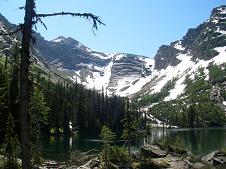
The snow is chosen immediately
right of the rocky slope at center.

|
|
The route from Snowshoe Lake. The snow is chosen immediately right of the rocky slope at center. |
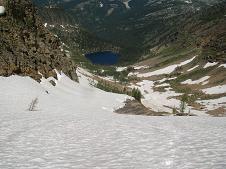
|
|
Looking back towards Snowshoe Lake from the ridgeline saddle. |
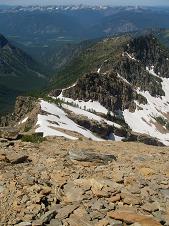
|
|
View west down-ridge to the 7,500 foot saddle. |
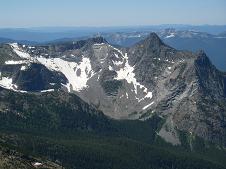
|
|
View of the terrain while high on the ridge. |
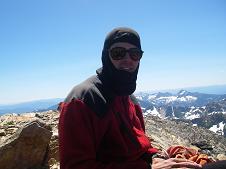
|
| John Stolk at the summit. |
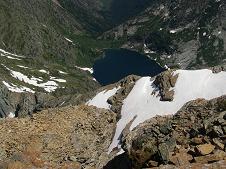
|
| Leigh Lake from the summit. |
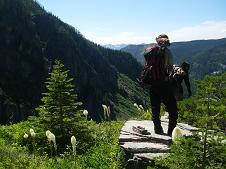
|
|
About to descend the rocky portion just below Snowshoe Lake. |
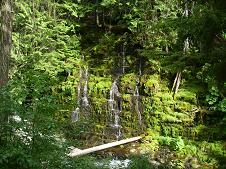
|
|
A set of cascades near the forest trail. |